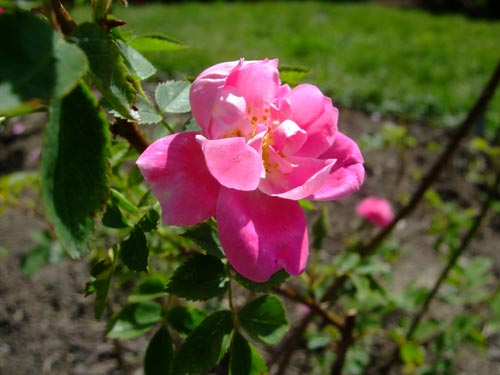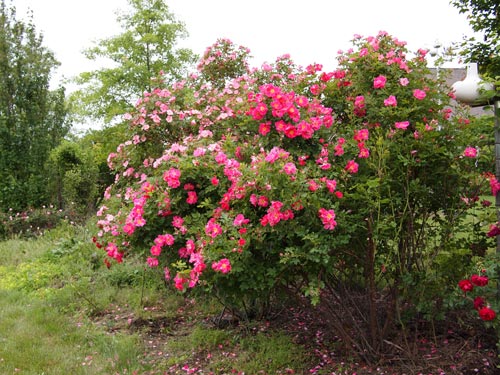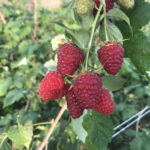Rose William Baffin
Who among the gardeners will refuse a large, beautiful, extremely winter-hardy and disease-free rose! It is clear that such a plant will always be in high demand. It is not surprising that the flower, the name of which is included in the title, has remained one of the most popular for many years, because it fully possesses all the listed qualities.

History of creation
The author of this variety is Felicitas Sveida, a legendary woman who has created many masterpiece varieties in her long life that have become the property of gardeners around the world. Felicitas was for several decades the lead employee of the famous rose research station in the province of Ontario (Canada). Here she created her wonderful, unsurpassed Explorer Rose series, which includes about 25 varieties, released between 1966 and 1999. The breeder herself was directly involved in the work on 13 varieties, the rest were obtained without her participation, but using her best practices and ideas.
And the rose William Baffin was registered by the Department of Agriculture of Canada in 1983, although the variety actually appeared much earlier, but it did not go to exhibitions or on sale - he participated in scientific breeding work. The rose got its name in honor of the famous Canadian seafarer, explorer of the world ocean, who lived in the 17th century.

Description of appearance
Belongs to the group of Canadian park roses. The bush is very powerful, often the shoots grow 3 meters or more per season, which allows some reference books to add the variety to the category of climbing plants. In the Explorer series, William Baffin, if not the largest, then certainly one of the largest varieties.
It is important that the lash-shoots of the plant are thick and strong, they can grow for a long time without additional support. The leaves are large, dark green, dense, with a waxy coating, which makes them less susceptible to common diseases.
The flowers of William Buffin, of course, cannot be called refined and exquisite, as, indeed, all Canadian roses. They are small, with an average diameter of about 7 cm, semi-double. But, as if as compensation, they appear on the bush in the form of numerous, rich brushes, 15-25 pieces each. The blooming specimen literally boils with a rich pink color! In the middle of each flower, a white spot stands out, which creates a special charm. Gradually opening, the tips of the petals are bent, so the flower seems more luxuriant than it really is. The bloom is remontant, but at the beginning of summer and autumn, two waves are especially intense.

Features of agricultural technology and use
We have already mentioned the strong qualities of the bush. According to the United States Department of Agriculture (USDA), the rose can be grown in a wide temperature range, from zones 2 to 9. Even if it is severely damaged by frost, the lower buds usually survive, and a new bush grows from them in the spring. It is also one of the most resistant varieties, it is not afraid of fungal diseases or cold rains. If the bush nevertheless "picked up" the infection, it can be easily cured with the help of appropriate drugs.
Most often, William Buffin is planted as powerful hedges, and also used as a climbing rose, decorating pergolas, arches, high fences. Looks great on the site and as an unpretentious specimen plant.
Due to its versatility and plasticity, the variety is loved by both experienced gardeners and beginners who do not have much experience. This is truly a trouble-free, win-win rose!








